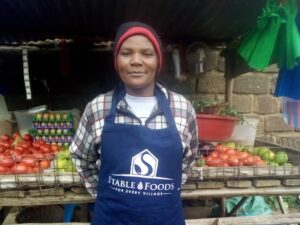Implementing conservation practices like nutrient optimization, crop rotation, conservation tillage, and cover crops can put money back in farmers’ pockets, according to a new report.
If farmers are willing to take a patient approach in determining which conversation practices are right for their operation, they could realize “a cascade of cost savings throughout their budgets” as well as improved soil health and reduced runoff, reads the report from the Environmental Defense Fund (EDF) released today.
Although most farmers agree that conservation and sustainable farming practices are important, they also need to ensure that their farming operations remain profitable. With a limited number of growing seasons throughout a farmer’s lifetime, taking risks on new farming methodologies without knowing whether they’ll hit the minimum margins they need to keep the business afloat each year, can be too much risk for even the most progressive farmer to stomach.
For the report entitled Farm finance and conservation: How stewardship generates value for farmers, lenders, insurers and landowners, EDF, along with farm budgeting specialists AgKnowledge, teamed up with three Midwestern crop farmers to take a hard look at the numbers behind certain conservation practices like conservation tillage and crop rotation.
“The analysis of the impact of conservation adoption on farm budgets offers a reason to be optimistic,” states the report. “The farmers found that conservation management systems can produce lower costs than conventional management and, in some cases, increased or provided more resilient yields.”
There is also value to be gained from farmers’ financial partners, such as crop insurance providers, who could incorporate this added value into their decision-making process and have a financial interest in conservation, according to Maggie Monast, senior manager of Agricultural Sustainability at EDF.
Farmer-Led Research
Instead of EDF and AgKnowledge coming up with the quandary, it was a group of farmers interested in how conservation played into profits who sparked the original idea for the study.
“We have this group of farmers who advise us on our strategy and make sure that it is grounded while producing the environmental incomes that we want to see,” Monast told AgFunderNews. “The farmers actually came to us and said we want to better understand the impact of conservation on our budget. These are very savvy farmers and it intrigued me that they didn’t have an adequate answer to that question already.”
Scott Henry of Iowa, Justin Knopf of Kansas, and Josh Yoder of Ohio opened their books and shared comprehensive farm-level data. As Monast notes, it can be quite difficult to convince a farmer to hand over unfettered access to his or her records. The report also included a comparative analysis of 10 additional farms.
EDF and AgKnowledge also saw a gap between research on conservation practices and incentivizing producers like Henry, Knopf, and Yoder to take the time, effort, and financial risk to implement them as part of their operations.
Instead, farmers are required to bear every cost associated with adopting a conservation practice and related parties who stand to benefit from conservation are failing to support farmers in this endeavor, added Monast.
A Whole-Farm Approach
EDF and AgKnowledge took a whole-farm approach to quantifying the impact of conservation practices. According to Monast, it was only when the operation was viewed as a whole that the impact of a certain practice could be seen in other aspects of the business.
“My background is in econ and I am used to studies looking at practices in isolation and those often don’t show the financials penciling out,” she says. “These farmers were very attentive to where they adopted no-till and how cover crops fit in that system and how it resulted in a reduced herbicide pass or fertilizer interaction. It was those connections that allowed them to see where the profit was being realized.”
One of the case study farmers was initially quite skeptical about cover crops. But after five years of implementing the practice, he now sees it as having a permanent place in his operation without having to sacrifice profits. Another farmer in the trio originally had issues making cover cropping a financially plausible part of his operation, but eventually made the right modifications to see the dollars needed to keep it going.
“These are case studies of farmers who successfully adopted these practices and it really shows farmers how they figured it out and how they fit them into a profitable farming enterprise,” adds Monast.
Conservation Advice for Farmers
EDF is hopeful that these findings and additional studies in the same vein will encourage the farm financial system to start taking conservation practices into account. More importantly, they hope that the report, which involves three very common and ubiquitous farming operations, will show other operators that adopting these basic practices is worth the fiscal and practical costs of implementation. As Monast notes, the practices are all fairly standard and have been part of the conservation dialogue for many years.
Her best advice to farmers curious about conservation is to try a practice out on a portion of the farm and see how it reacts, paying attention to related areas where the conservation practice may have yielded more dollars in addition to better soil, water quality, and other outcomes.
With the report’s optimistic findings, Monast and EDF are hoping to work next on connecting the dots between farmers and corporations when it comes to the value of conservation practices. This includes lenders, insurers, farmland investors, and other groups who have a financial interest in conservation.
















Sponsored
International Fresh Produce Association launches year 3 of its produce accelerator